What Are Oral Tobacco Products? An Encyclopedic Guide for Brands and Retailers
Welcome to your definitive oral tobacco products guide. Oral tobacco products are a category of non-combustible products containing tobacco that are designed for oral use. In this format, the product is placed in the mouth, typically between the lip and gum. Unlike smoked tobacco, nicotine is absorbed through the oral mucosa rather than the lungs. This category encompasses a wide variety of product types with distinct origins, formats, and characteristics. This comprehensive guide provides foundational knowledge on these diverse oral tobacco products.
1. Defining Oral Tobacco Products: The Fundamentals
Oral tobacco products are broadly defined as tobacco-containing items intended for oral consumption without combustion. Their primary characteristic is the absorption of nicotine through the mucous membranes of the mouth. This method differentiates them fundamentally from inhaled tobacco products. The category represents a significant segment of the tobacco market, offering alternatives to traditional smoking.
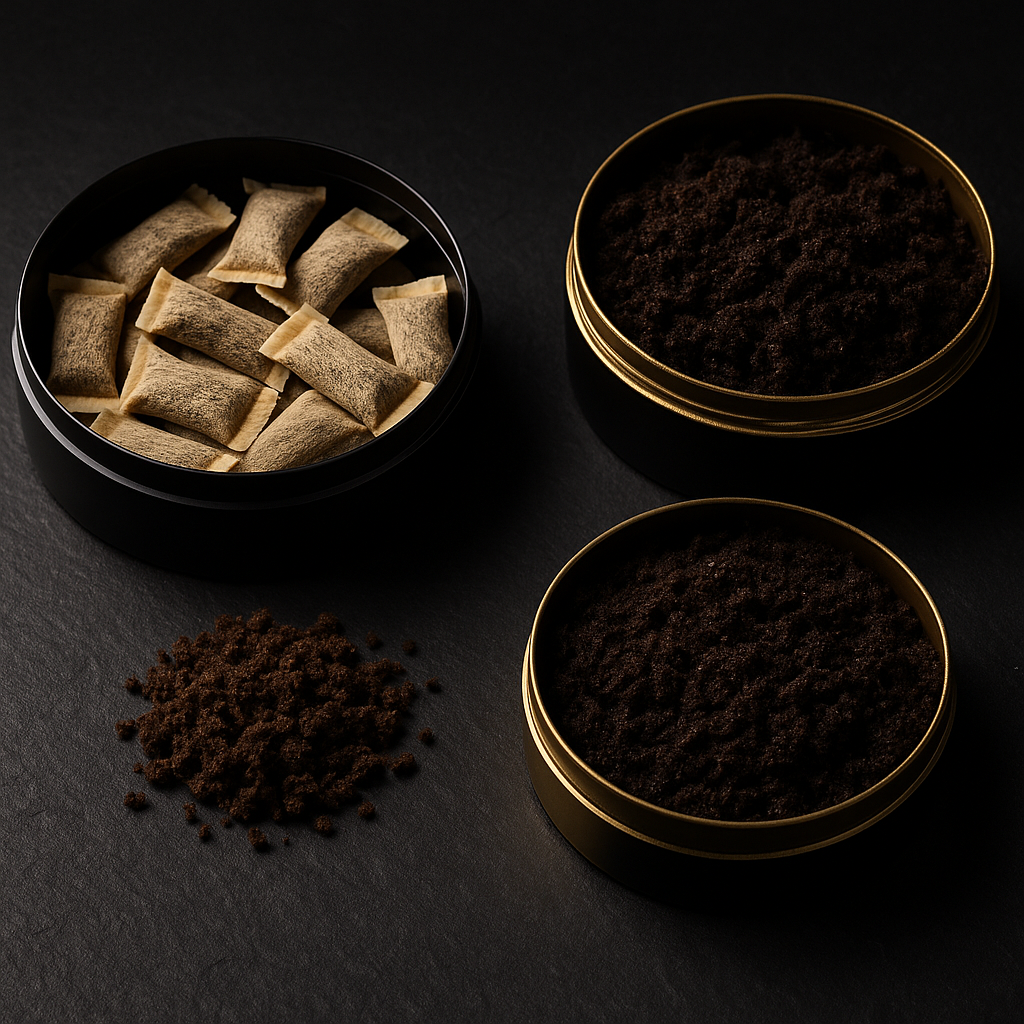
Key Points from This Section:
- Oral tobacco products are non-combustible and used orally.
- Nicotine absorption occurs via the oral mucosa.
- This category includes various product types and forms.
2. A Brief History & Geographical Origin
The earliest forms of oral tobacco use originate with the indigenous peoples of the Americas, who chewed tobacco leaves. This practice was adopted by European colonists, spreading tobacco use globally.
In the 18th century, Sweden developed snus, a pasteurized, moist powder tobacco product. This innovation evolved from dry nasal snuff and marked a significant divergence. This distinctive Swedish product deeply ingrained in Scandinavian culture.
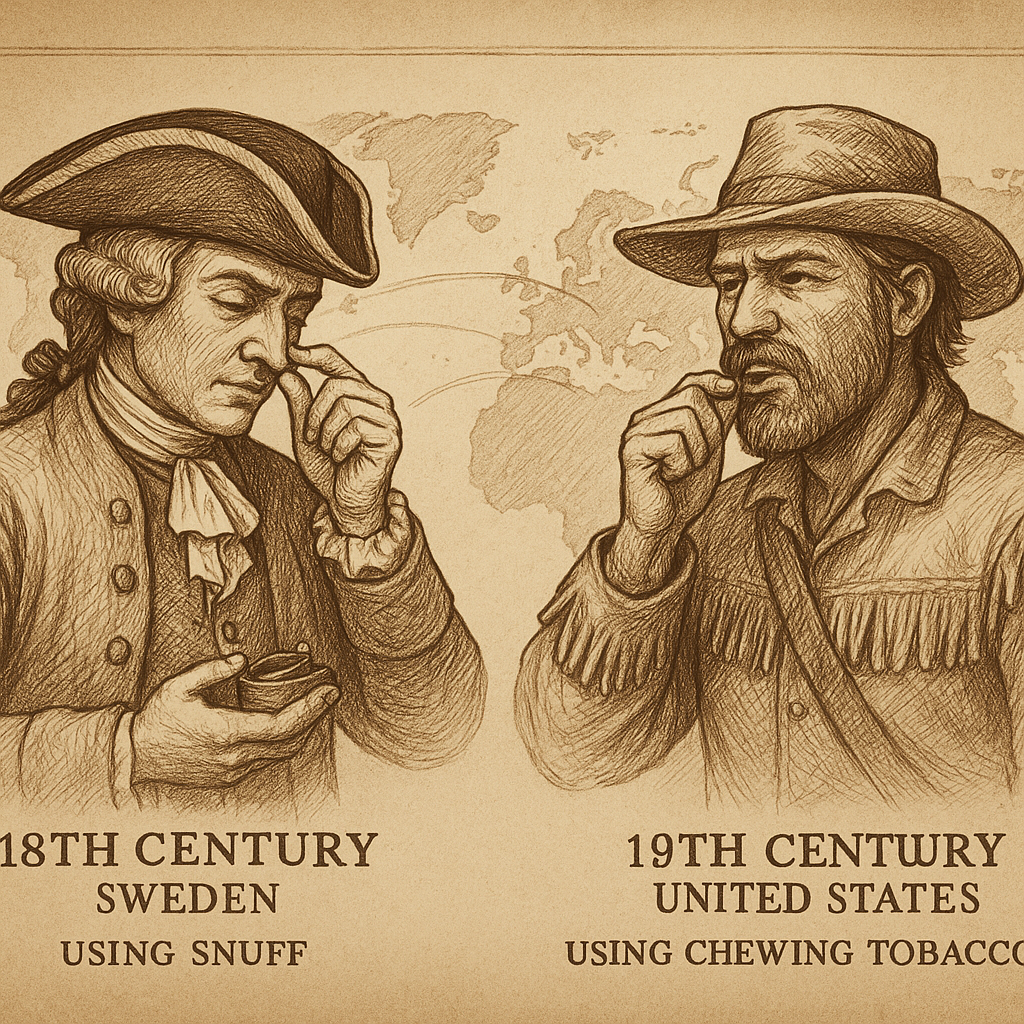
The 20th and 21st centuries saw significant innovation in the oral tobacco landscape. This period led to the development of portioned products and, subsequently, tobacco-free alternatives that mimic the oral experience.
Key Points from This Section:
- Oral tobacco use originated with indigenous American populations.
- Swedish snus emerged in the 18th century as a distinct pasteurized product.
- Modern developments include portioned products and tobacco-free alternatives.
3. A Comprehensive Oral Tobacco Product Types Guide
Swedish-style snus is characterized by steam pasteurization rather than fire-curing, which influences its chemical profile. This unique processing method differentiates it from other oral tobacco products.
- Loose Snus (Lös): This is the original format of snus. It consists of moist, ground tobacco powder that the user manually forms into a “pris” (a small portion) before placement.
- Original Portion: This format features pre-packaged loose snus within a small pouch. The pouch material is moistened during production, giving it a dark color and enabling a rapid flavor release.
- White Portion (Vit): A variation where the pouch material is not moistened, resulting in a drier, white pouch. This leads to a less runny experience and a more prolonged flavor release compared to original portions.
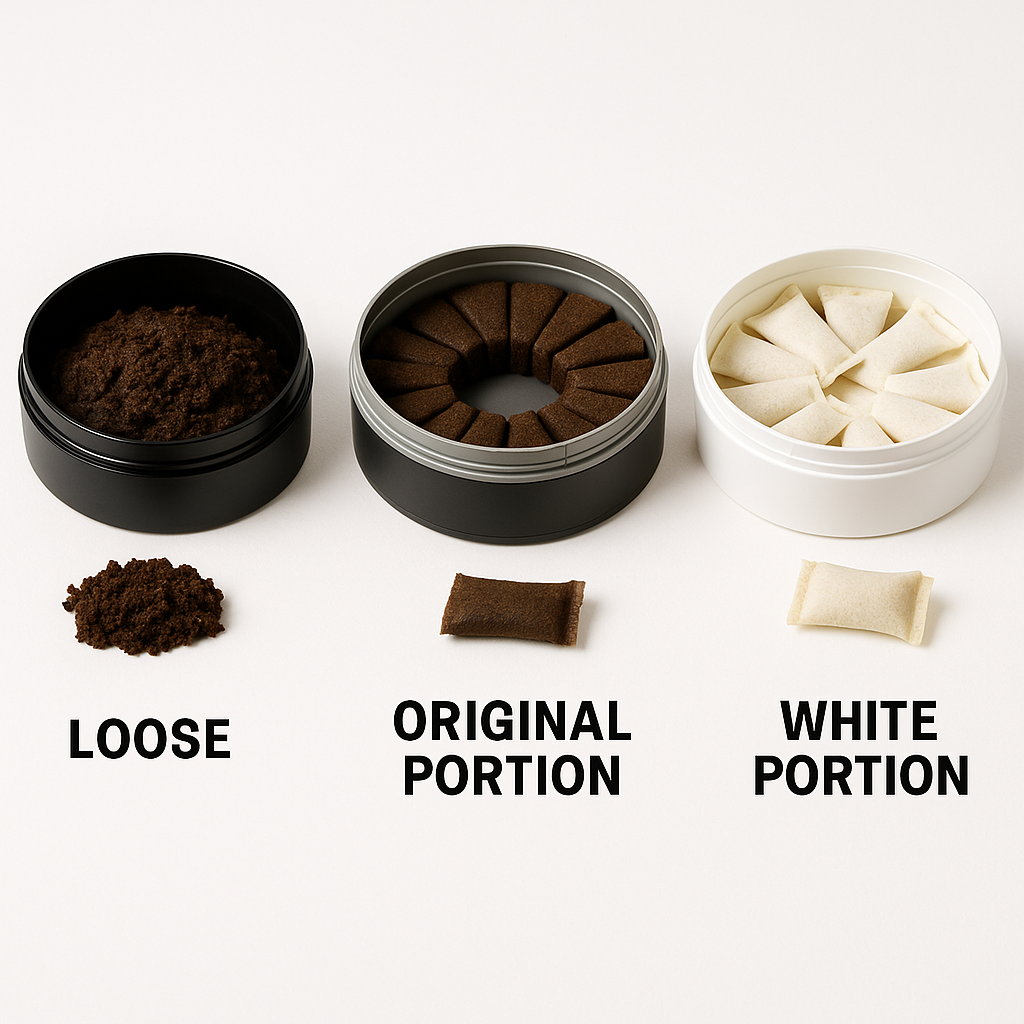
3.2 American-Style Moist Snuff
Also known as “dip,” American-style moist snuff is a significant product category in North America. It is typically made from fire-cured tobacco and fermented, resulting in a distinct flavor profile compared to Swedish snus. This product often requires spitting due to the release of juices.
Commonly sold in “long cut” or “fine cut” formats, referring to the tobacco particle size. Long cut features longer strands of tobacco, while fine cut has smaller, more granular particles.
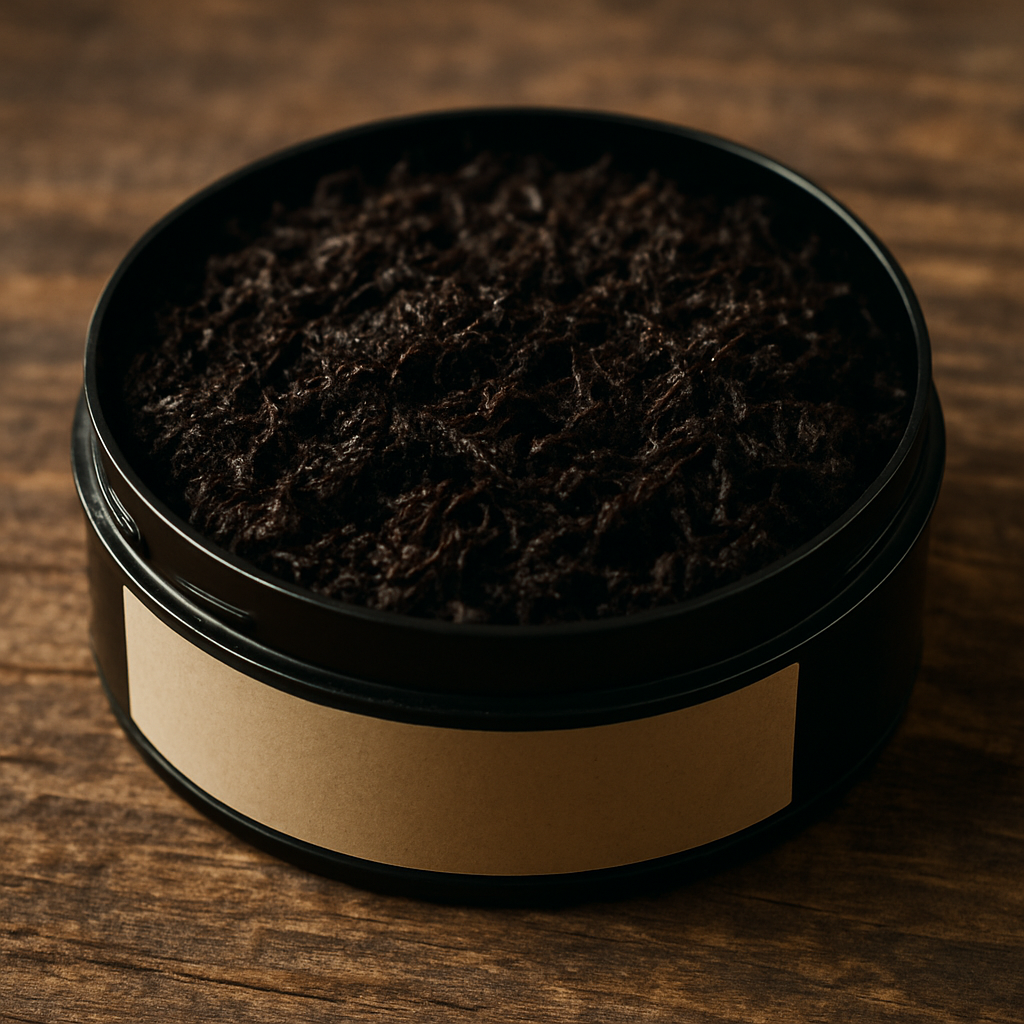
3.3 Dissolvable Tobacco Products
A less common sub-category, dissolvable tobacco products are designed to dissolve completely in the mouth. This eliminates the need for spitting or disposal after use. Formats include sticks, strips, and orbs, which are typically made from finely milled tobacco and food-grade binders.
Key Points from This Section:
- Swedish snus is pasteurized and comes in loose, original portion, and white portion formats.
- American-style moist snuff is fire-cured, fermented, and available in long cut or fine cut.
- Dissolvable tobacco products dissolve entirely, eliminating the need for disposal.
4. Mechanism and Standard Method of Use
When an oral tobacco product is placed in the mouth, saliva moistens the product, releasing nicotine. The nicotine is then absorbed into the bloodstream through the rich network of blood vessels in the lining of the mouth, known as the oral mucosa to a scientific explanation of nicotine absorption.
The pH level of an oral tobacco product is a critical factor influencing nicotine absorption. A higher (more alkaline) pH facilitates more efficient absorption of “free” nicotine, which is more readily available to the body.
A standard method of use for portioned oral tobacco products involves simple steps:
- Retrieve a portion from the container (or form one from loose material).
- Place the portion comfortably under the upper lip, typically to one side.
- Leave it in place until the flavor and nicotine sensation subsides.
- Remove and dispose of the used portion responsibly.

Key Points from This Section:
- Nicotine from oral tobacco products is absorbed through the oral mucosa, a key detail in this oral tobacco products guide.
- Product pH significantly influences nicotine absorption efficiency.
- Usage typically involves placing a portion under the lip for nicotine release.
5. Key Comparisons: Understanding the Modern Oral Product Landscape
5.1 Oral Tobacco Products vs. Tobacco-Free Nicotine Pouches
This is the most critical distinction in the modern market. While often used and sold side-by-side, their core composition is fundamentally different. This comparison is essential for any comprehensive oral tobacco products guide.
| Feature | Traditional Oral Tobacco Products (e.g., Snus) | Tobacco-Free Nicotine Pouches (e.g., ZYN, Velo) |
|---|---|---|
| Core Ingredient | Ground Tobacco Leaf | Plant Fiber (e.g., cellulose), Nicotine Salts/Extract |
| Color | Brown (from tobacco) | White (no tobacco) |
| Flavor Profile | Often has underlying tobacco notes | Cleaner flavor profile; flavors are more direct |
| Staining | Can cause tooth discoloration | Typically does not stain teeth |
For further reading on this rapidly evolving product category, refer to Understanding Tobacco-Free Nicotine Pouches.
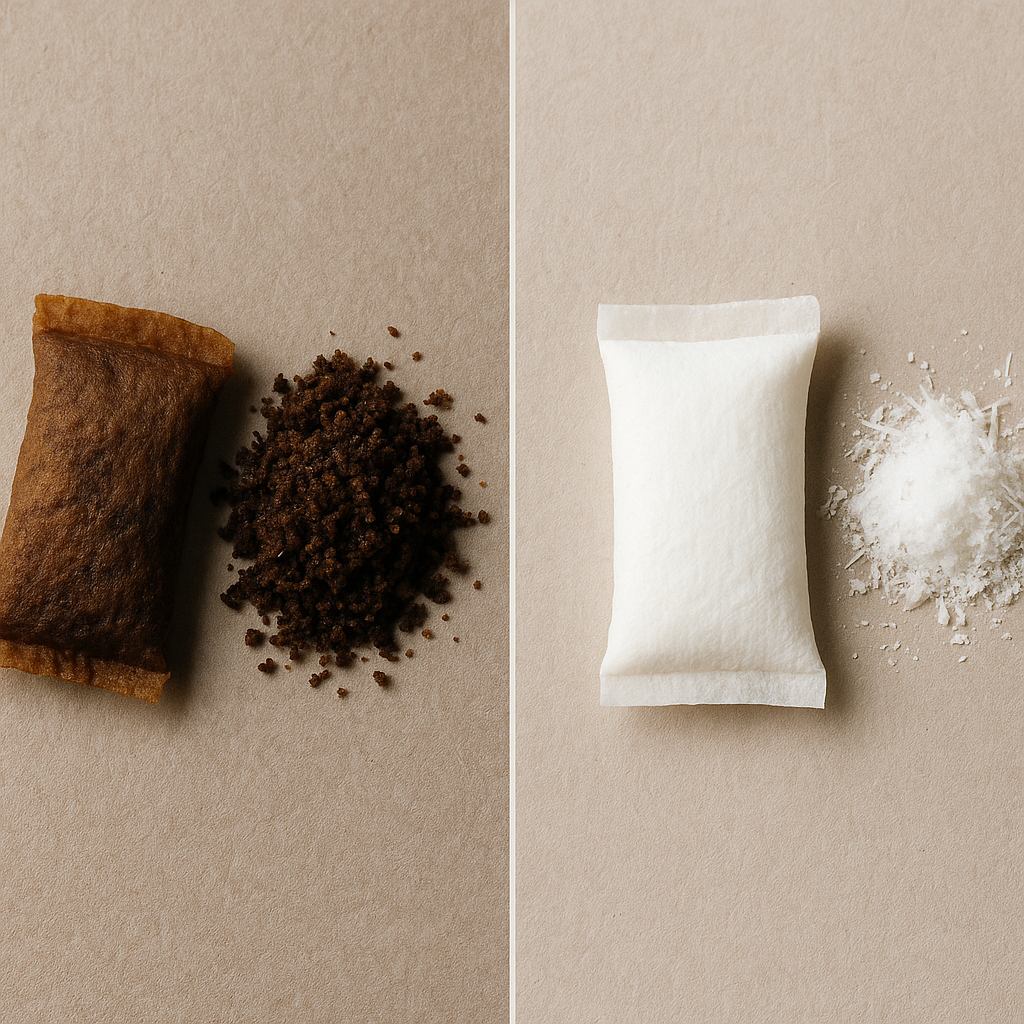
5.2 Snus vs. Chewing Tobacco
The processing methods and usage patterns of snus and chewing tobacco differ significantly. Snus is pasteurized, ensuring a clean and consistent product. Conversely, American chewing tobacco is typically cured and fermented, leading to a distinct product profile.
In terms of usage, snus is “parked” under the lip and generally does not require chewing, minimizing the need for spitting. Chewing tobacco, however, necessitates mastication (chewing) to release juices and nicotine, which leads to a greater need for spitting.
Key Points from This Section:
- Traditional oral tobacco products contain tobacco leaf, while nicotine pouches use plant fiber and nicotine salts.
- Nicotine pouches are white and generally do not stain teeth, unlike tobacco-based products.
- Snus is pasteurized and does not require chewing, whereas chewing tobacco is cured and necessitates mastication and spitting.
6. Frequently Asked Questions (FAQ)
This section provides answers to common questions, enhancing your understanding from this oral tobacco products guide.
- What factors determine the strength of an oral tobacco product?Strength is determined by several factors: the total nicotine content (mg/g), the moisture level of the pouch, the product’s pH level, and the pouch format. These elements collectively influence the rate and efficiency of nicotine release, impacting perceived strength.
- How should oral tobacco products be stored to maintain freshness?To preserve moisture and flavor, most oral tobacco products, especially Swedish snus, should be stored in a refrigerator. This is a key consideration for both retailers managing inventory and consumers to maintain product quality.
- What are the key regulatory differences between Europe and North America regarding oral tobacco products?In Europe, the sale of snus is banned in the EU, with the sole exception of Sweden. Tobacco-free nicotine pouches, however, are generally permitted and regulated differently across member states. In North America (USA and Canada), both traditional oral tobacco products (like moist snuff) and modern nicotine pouches are widely available, governed by specific federal and state/provincial tobacco regulations. Africa and the Middle East feature diverse regulatory landscapes, often with varying rules on tobacco and nicotine products.

- Does “portion size” affect the user experience?Yes. Formats like Slim and Mini offer a more discreet fit under the lip. However, these smaller portions typically contain less product and nicotine compared to standard-sized portions, impacting both the sensation and duration of nicotine release.
Key Points from This Section:
- Product strength is influenced by nicotine content, moisture, pH, and pouch format.
- Refrigeration is recommended for storing most oral tobacco products to maintain freshness.
- Regulatory environments for these products vary significantly between Europe (EU snus ban excluding Sweden) and North America.
- Portion size impacts discreetness, nicotine content, and overall user experience.

